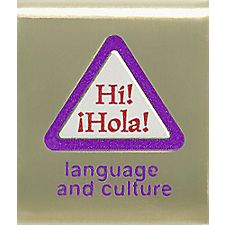This subject was added in 2002.
Webelos Scouts that earn the Language and Culture Belt
Loop while a Webelos Scout
also satisfy requirement 6 for the
Scholar Activity Badge.
Requirements
Tiger Cubs, Cub Scouts, and Webelos Scouts may complete requirements in a family, den, pack, school, or community environment. Tiger Cubs must work with their parents or adult partners. Parents and partners do not earn loops or pins.
Belt Loop
Complete these three requirements:
- Talk with someone who grew up in a different country than you did. Find out what it was like and how it is different from your experience.
- Learn 10 words that are in a different language than your own.
- Play two games that originated in another country or culture.
Academics Pin
Earn the Language and Culture belt loop, and complete seven of the following requirements:
- Earn the BSA Interpreter Strip.
- Write the numbers 1-10 in Chinese or another number system other than the one we normally use (we use the Arabic system).
- Visit an embassy, consulate, or charge d'affairs for another country.
- Make a display of stamps or postcards of another country. Explain the importance or symbolism of the things depicted to that country's culture.
- Learn 30 words in a language other than your own.
- Learn a song in another country's language.
- Say five words in American Sign Language. One of these words could be your first name.
- Visit a restaurant that specializes in recipes from another country.
- Watch a TV show or movie in a foreign language. Tell how easy or difficult it was to understand what was happening.
- Interview an interpreter. Find out what his or her job is like.
- Make a list of 30 things around your home that were made in another country.
- Read a book or story about an immigrant to the United States.
If the Scout's native language is not English, then English may be used to satisfy the appropriate requirements.








